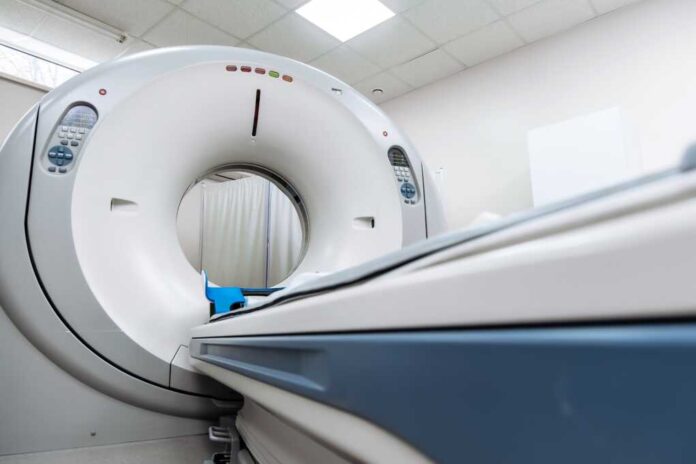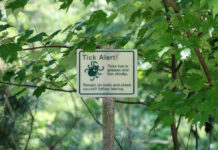
A routine hospital procedure turned deadly for a young woman, exposing how even the safest medical practices can carry hidden, life-altering risks that few patients or families anticipate.
Story Snapshot
- A 22-year-old Brazilian law graduate died after a rare allergic reaction to CT scan contrast dye.
- The incident highlights the extremely low but catastrophic risk of fatal reactions during routine medical imaging.
- Experts confirm such outcomes are exceptionally rare but urge vigilance in risk assessment and emergency preparedness.
- The case has sparked renewed debate over patient safety protocols and the limits of medical screening.
Routine Scan Results in Tragedy for Young Patient
On August 19, 2025, Letícia Paul, a 22-year-old law graduate in Brazil, underwent a routine CT scan at Hospital Regional Alto Vale in Rio do Sul, Santa Catarina. The scan, intended to monitor her history of kidney stones, involved the administration of an iodinated contrast dye—a substance widely used in medical imaging to enhance organ and blood vessel visibility. Shortly after the injection, Letícia experienced a severe anaphylactic reaction. Despite immediate intervention and intensive care, she died less than 24 hours later, underscoring the unpredictability and potential danger of even the most standard medical procedures.
Do you know how many times I’ve heard doctors tell patients that CT contrast is low risk?
And how many times have we actually witnessed side effects and allergic reactions?
Too many to count.
In this case, the fatal reaction was triggered by the contrast dye injected before… pic.twitter.com/LKC3wjKv1n
— Informed NJ Nurses (@InformedNJNurse) August 25, 2025
This fatal event occurred despite the hospital’s adherence to internationally recognized protocols for contrast administration, as confirmed in their official statement. Letícia had no widely reported prior history of allergies to contrast dye, making her case especially alarming for patients and medical professionals alike. While contrast agents are generally considered safe, their use has always carried a spectrum of risks, ranging from mild side effects such as nausea or itching to, in very rare cases, severe and life-threatening reactions. The rarity of such fatal outcomes has not prevented global attention, as this tragedy brings the hidden hazards of routine imaging into sharp focus.
Watch a report:
Medical Background: Contrast Dye Risks and Historical Context
Iodinated contrast agents have been used for decades to improve the clarity of CT scans and other medical imaging. Advances in the development of non-ionic and low-osmolality contrast agents have significantly reduced the frequency of adverse reactions. Most side effects are mild and resolve quickly; however, major reactions—such as anaphylactic shock or death—remain possible, though they occur at a rate estimated at about one in 170,000 administrations. Most commonly, severe reactions are unpredictable and not reliably prevented by current patient screening methods. This leaves even healthy, low-risk individuals vulnerable to rare and devastating outcomes.
Modern hospitals are required to maintain strict emergency preparedness for these rare events. In Letícia’s case, medical personnel responded immediately, providing intubation and intensive care. Nonetheless, the fatal result highlights the limits of current risk assessment and intervention protocols. The lack of effective pre-screening tools for rare allergic reactions means that even the best-prepared facilities can face tragic losses. This reality reinforces the need for transparency in patient consent processes and continued vigilance in emergency response training within radiology departments worldwide.
Stakeholder Roles and Broader Patient Safety Implications
The hospital, medical staff, and regulatory agencies each play a critical role in patient safety. Hospitals are responsible for adhering to best practices in both administration and emergency response, while oversight bodies set and enforce safety standards. Families, like Letícia’s, often become advocates for greater awareness and accountability. The public’s concern is likely to influence discussions around informed consent, risk disclosure, and the adequacy of emergency preparedness in medical imaging environments.
Patients undergoing contrast-enhanced imaging—and the professionals caring for them—must now weigh the overwhelmingly positive safety record of these procedures against the undeniable, albeit minuscule, risk of catastrophic outcomes. This paradox underscores the importance of clear communication between patients and providers about both benefits and risks. The medical community faces ongoing pressure to improve screening and response protocols.
Sources:
Young lawyer dies after routine medical scan triggers fatal allergic reaction
Mayo study finds few serious reactions to CT and MRI contrast
Adverse reactions to iodinated contrast media: a review
Acute Reactions to Contrast Media: Incidence and Management
Iodinated contrast agents: history, risks, and prevention


















